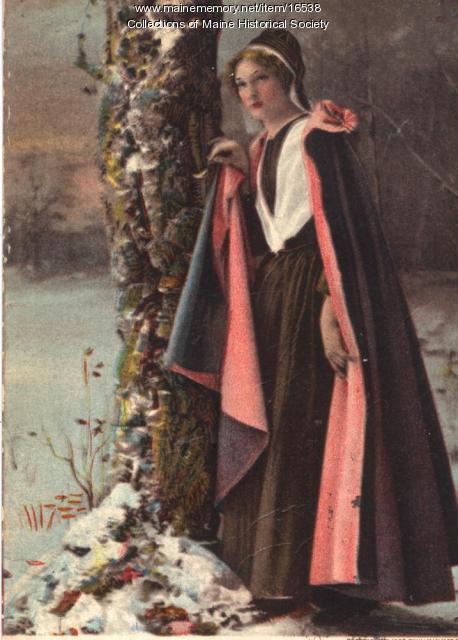Keywords: british
Item 76138
British racer, 1971 World Cup, Sugarloaf
Contributed by: Sugarloaf Mountain Ski Club through Ski Museum of Maine Date: 1971 Location: Carrabassett Valley Media: Photographic print
Item 100325
Act of Parliament, Portland, 1711
Contributed by: Tate House Museum Date: 1711 Location: Portland Media: Ink on paper
Exhibit
The British capture and occupation of Eastport 1814-1818
The War of 1812 ended in December 1814, but Eastport continued to be under British control for another four years. Eastport was the last American territory occupied by the British from the War of 1812 to be returned to the United States. Except for the brief capture of two Aleutian Islands in Alaska by the Japanese in World War II, it was the last time since 2018 that United States soil was occupied by a foreign government.
Exhibit
Liberty Threatened: Maine in 1775
At Lexington and Concord, on April 19, 1775, British troops attempted to destroy munitions stored by American colonists. The battles were the opening salvos of the American Revolution. Shortly, the conflict would erupt in Maine.
Site Page
View collections, facts, and contact information for this Contributing Partner.
Site Page
Highlighting Historical Hampden - War of 1812
"In 1779, after taking Castine, the British chased the fleeing American ships the Vengeance and the General Putnam."
Story
Maine Country Music Hall of Fame & Museum
by Ken Brooks
How the Maine Country Music Hall of Fame & Museum began
Story
John Coyne from Waterville Enlists as a Railroad Man in WWI
by Mary D. Coyne
Description of conditions railroad men endured and family background on John Coyne.
Lesson Plan
Longfellow Studies: The Acadian Diaspora - Reading "Evangeline" as a Feminist and Metaphoric Text
Grade Level: 6-8, 9-12
Content Area: English Language Arts, Social Studies
Evangeline, Longfellow's heroine, has long been read as a search for Evangeline's long-lost love, Gabrielle--separated by the British in 1755 at the time of the Grand Derangement, the Acadian Diaspora. The couple comes to find each other late in life and the story ends. Or does it?
Why does Longfellow choose to tell the story of this cultural group with a woman as the protagonist who is a member of a minority culture the Acadians? Does this say something about Longfellow's ability for understanding the misfortunes of others?
Who is Evangeline searching for? Is it Gabriel, or her long-lost land of Acadia? Does the couple represent that which is lost to them, the land of their birth and rebirth? These are some of the thoughts and ideas which permeate Longfellow's text, Evangeline, beyond the tale of two lovers lost to one another. As the documentary, Evangeline's Quest (see below) states: "The Acadians, the only people to celebrate their defeat." They, as a cultural group, are found in the poem and their story is told.













